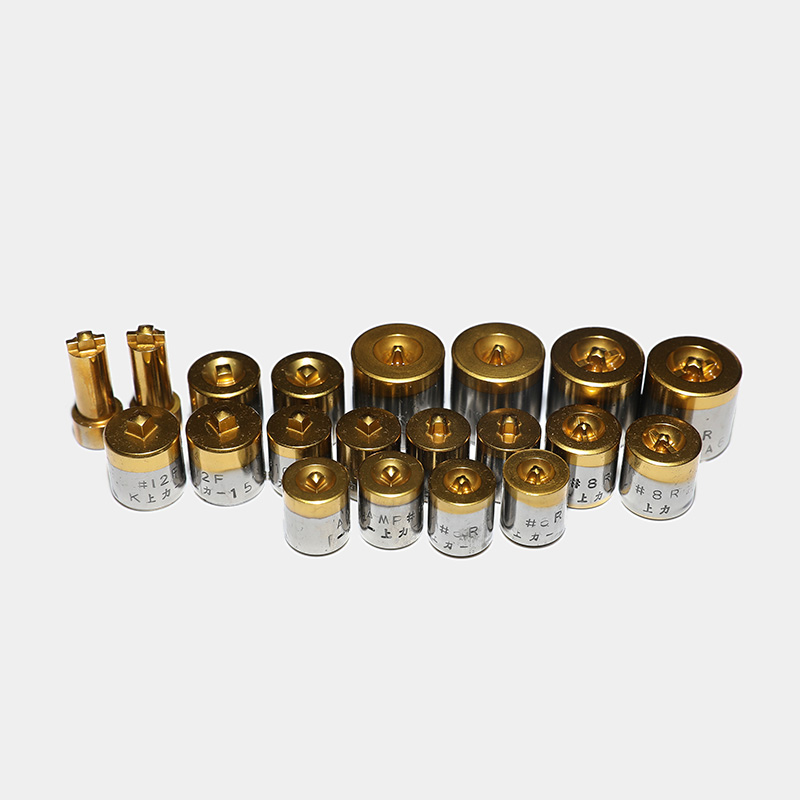Screw Second Punch: The Essential Tool for Precision and Efficiency
2025-04-15
When it comes to mechanics, construction, or any trade that involves fastening components together, having the right tools is crucial for getting the job done efficiently and accurately. One such tool that stands out for its precision and usefulness is the Screw Second Punch. While it may not be as widely known as other tools like hammers or screwdrivers, the screw second punch plays a pivotal role in ensuring tight and secure fittings during assembly.
In this blog, we’ll dive into the importance of a screw second punch, how it works, and why it’s an essential tool in various industries.
What is a Screw Second Punch?
A Screw Second Punch, also known as a screw positioning punch, is a specialized tool used to create indentations in materials, typically metal or plastic, to ensure the proper alignment of screws. The primary purpose of this punch is to guide screws into pre-determined positions for precise installation. It helps to prevent slipping, misalignment, or damage to the workpiece during the initial stages of securing screws.
The tool is generally small, with a pointed end that allows for accurate and controlled marking. The “second punch” part of the name refers to its function of making a second, finer indentation after a primary punch has been made, ensuring a secure fit for the screw.
How Does a Screw Second Punch Work?
The screw second punch is designed to be easy to use, requiring only basic handling to ensure effective results. Here’s how it typically works:
1. Positioning: Place the workpiece on a stable surface and mark the initial location where the screw will be inserted.
2. Initial Punching: Use the first punch tool to make a larger indentation at the marked location. This provides the initial point of reference for the screw.
3. Using the Screw Second Punch: After the initial punch, the screw second punch is applied over the indent. The tool's sharp, pointed tip creates a smaller, more defined indentation.
4. Screw Insertion: This fine indentation serves as a precise guide for the screw, ensuring that it is positioned perfectly in place when driven into the material. The second punch helps to avoid slippage during installation, making it easier to insert screws accurately.
Benefits of Using a Screw Second Punch
1. Enhanced Precision: The main benefit of using a screw second punch is the accuracy it provides when positioning screws. This is especially important in industries like electronics, automotive, and construction, where even a slight misalignment can result in poor performance or damage.
2. Prevents Slippage: One of the common issues when installing screws is the risk of the screw driver slipping off the screw head, especially when dealing with hard materials. The indentation created by the screw second punch serves as a guide, preventing slippage and ensuring a clean, secure installation.
3. Saves Time: While it may seem like an extra step, using a screw second punch can actually save time in the long run. By ensuring that the screws are aligned properly from the start, the likelihood of having to redo the work due to misalignment is greatly reduced. This makes for faster and more efficient installation processes.
4. Reduces Material Damage: When screws are not properly aligned, there’s a greater chance of damaging the workpiece, especially in softer materials like plastic or wood. A screw second punch minimizes the risk of cracking, stripping, or damaging the surrounding material by providing a controlled indentation.
5. Versatility: The screw second punch is versatile enough to be used in various industries, from furniture assembly to electronics manufacturing and even in automotive repairs. It’s an essential tool wherever precision screw placement is needed.
Applications of Screw Second Punch
1. Electronics Assembly: In the electronics industry, the precision of screw placements is critical to ensure the proper assembly of components like circuit boards, screens, and devices. A screw second punch is often used to secure screws in delicate components without causing damage.
2. Furniture Manufacturing: For manufacturers of furniture, ensuring that screws are properly aligned for both functionality and aesthetics is crucial. Using a screw second punch helps to create neat, secure fittings that contribute to the overall quality of the product.
3. Automotive Industry: When assembling or repairing automotive components, the need for precise screw placements is even more critical. A screw second punch helps mechanics align screws properly, preventing misalignments that could compromise the integrity of the vehicle.
4. Construction and DIY Projects: For DIY enthusiasts and professionals alike, the screw second punch ensures that screws go in precisely where they’re needed. This is especially useful when working with hard-to-reach areas or when you need to install screws at a specific angle.
How to Choose the Right Screw Second Punch
When selecting a screw second punch, there are a few factors to consider:
- Material Compatibility: Make sure the tool is suitable for the material you’ll be working with. Some punches are designed specifically for metal, while others are better suited for wood or plastic.
- Tip Shape and Size: The shape and size of the punch tip should match the size of the screw being used. For smaller screws, a finer punch tip will be necessary to make precise indentations.
- Durability: Look for a screw second punch made from high-quality materials, such as hardened steel, to ensure it can withstand repeated use without losing its sharpness or effectiveness.
- Ergonomic Design: An ergonomic handle or grip can make a big difference, especially for prolonged use. A comfortable design ensures better control and reduces hand fatigue.
Conclusion
The screw second punch may not be a tool you use every day, but when you need it, it’s a game-changer. Whether you're working on a complex machinery assembly or a simple DIY project, this tool ensures that your screws are positioned precisely and securely, reducing the chance of errors and enhancing the quality of your work. It’s a small investment that can make a big difference in the efficiency and professionalism of your projects. So next time you’re assembling or repairing something that requires precision, don’t overlook the power of the screw second punch – it could be the key to a job well done!



